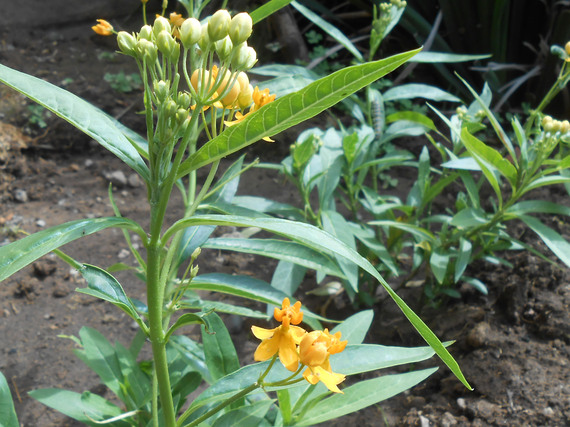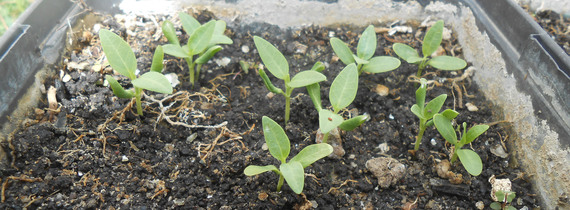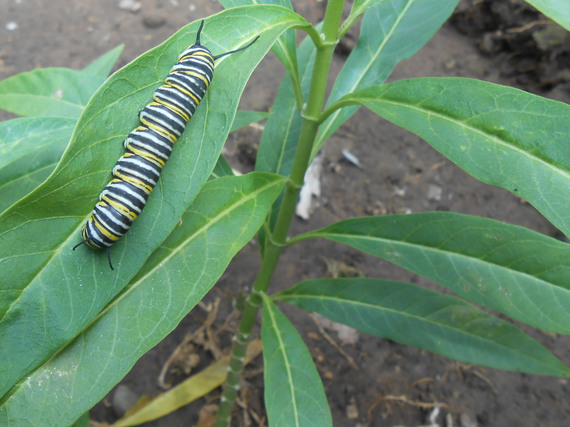I don't usually tell people what to do (probably because very few people would do what I say anyway), but I'm going to tell you what to do... plant some milkweed! Spring is here, and it's time to plant milkweed (if you haven't already). If you're planting your garden... plant some milkweed too. If you're planting flowers... plant some milkweed too. If you aren't planting anything, plant some milkweed anyway!
At this point, you may be wondering, what is milkweed, and what's my obsession with it? You might not be familiar with milkweed, but you're probably familiar with the iconic orange and black Monarch butterfly. Milkweed (a weed) is the ONLY plant the Monarch caterpillar can eat, and thus is it's only food source. Unfortunately, today in the US there is a lot less milkweed, which means there are a lot fewer Monarch butterflies. In fact, the population of Monarch butterflies has dropped so much in the past twenty years, it is possible that the Monarch butterfly could face quasi-extinction in our lifetime. We could lose this iconic butterfly.
The good news is that this past winter, the population of Monarch butterflies increased somewhat (see image above), but this positive development doesn't mean the threat to the Monarch butterfly is over. We need more milkweed! It may be hard for us backyard farmers to believe, but unlike us, the American farmer has been winning the war on weeds (which may be good for this country's food supply but is bad for the Monarch butterfly which can't survive without the milkweed "weed"). With modern farming techniques, the amount of milkweed in this country has been dramatically reduced over the past two decades. Fortunately, you can help. You can plant milkweed, and now is the time to do it. While it may seem that a few plants can't make a difference on the national scale, if you plant some milkweed and educate yourself and your family about the Monarch butterfly, and help spread the word by telling others, you can make a difference. Awareness and education are critical to helping the Monarch butterfly.
Types of Milkweed
There are many types of native milkweeds. Check to determine what type is native to your area. There are also tropical milkweeds, which is what I grow here in Southern California. While native milkweed may be preferable to tropical milkweed, both types work to provide the critical food source for the Monarch caterpillars. Check with your local nursery to see what types of milkweed they have available, and what they recommend.
Seeds or Plants
I prefer to grow milkweed from seeds. If you buy a milkweed plant at a nursery, you run the risk that the plant may have been sprayed with pesticides, which will kill the Monarch caterpillars when they feed on your plants. It's more work to grow milkweed from seed, but I think it's worth it. Further, it can be hard to find milkweed plants at your local nursery, but you can always get milkweed seed online. If you do a Google search, there are a few Monarch preservation organizations that will provide free milkweed seed. I've been growing tropical milkweed for a few years, and this past fall got a good harvest of seed (something you can look forward to once you've established a milkweed crop). If you want to contact me via email at my personal website here, I'd be happy to send you some tropical milkweed seed for free.
Teach Your Kids About The Environment
If you have kids, I can't think of a better way to get them away from their video games and smart phones and instill in them an appreciation of nature and the outdoors, than growing milkweed and witnessing the life cycle of the Monarch butterfly. As your milkweed grows, you'll want to keep an eye on it, until one day you spot a small yellow, black, and white striped Monarch caterpillar. Have your kids gentle pick the caterpillar up and let it crawl over their hands and arms. Then keep an eye on the caterpillar as it grows and if you're lucky once it gets big and fat, you'll find it hanging in a J and then if you're really lucky you'll see it split its skin and turn into a green chrysalis. About ten days later, the chrysalis will darken as the shell becomes clear and you can see the transformed and tightly wrapped black and orange Monarch butterfly inside. Soon the chrysalis will split open and a bedraggled fledgling butterfly will emerge. Over a few hours, the new butterfly will pump up its wings and let them harden in the sun, and then it will flap a few times and flutter off. I've seen this magical process many times, but it never ceases to amaze me.
Spring is here. Plant some milkweed today!



